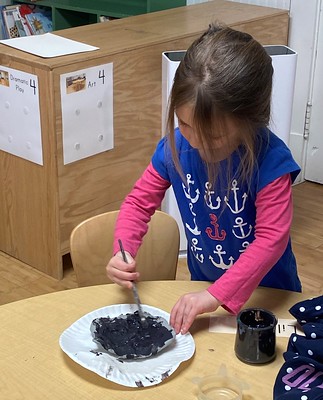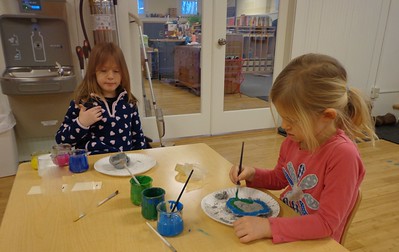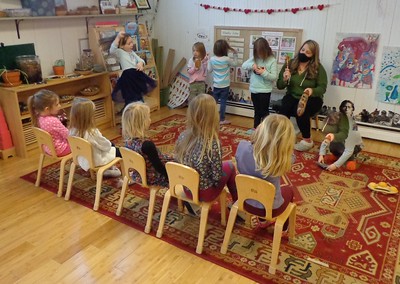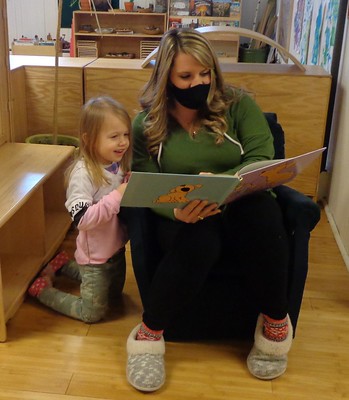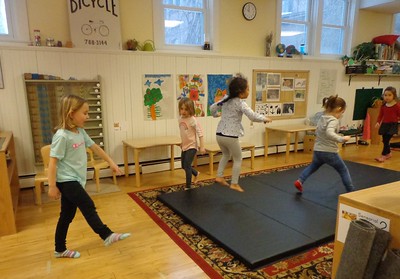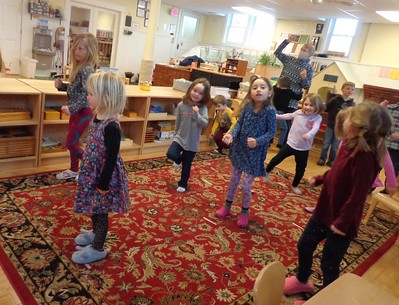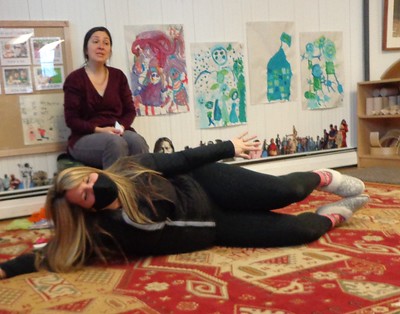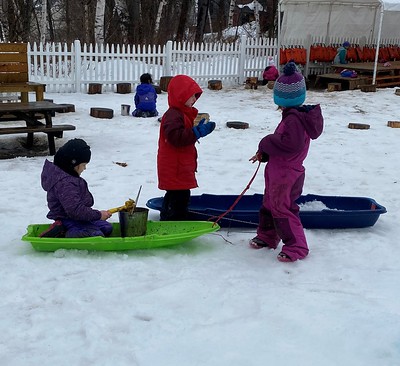Monday students used their art time to paint their clay sculptures that they created before break. The clay is quite fragile, as it air dries rather than being baked in a kiln, so we had to be careful to prevent cracking.
We did some moving and got our heartrates up, then felt how fast they were beating. We observed that our bodies were hot, our breathing was heavy, and our hearts were beating quickly in our chests. We read a book called Listening to My Body: A Guide to Helping Kids Understand the Connection Between their Sensations and Feelings. It is all about the physical sensations in our bodies and what they tell us and the emotional feelings in our bodies and what they tell us. It talks about how we may exhibit our emotions physically, such as clenching our fists, raising our shoulders, and getting a bit warmer when we are angry. We also learned some strategies for how to help ourselves recover from intense emotions and safely handle them. We did activities throughout the book to bring some awareness to how our bodies were feeling and what made them feel that way.
Henrietta and Wolfgang visited to introduce their friend, Tucker Turtle, who has a lot of stories to share. One story he had was from when he was young at Sunny Stream school. Tucker shared that he used to get angry and hit, yell, and throw things, but he doesn’t do that anymore. He learned to STOP, tuck in and take some deep breaths and THINK of a solution to his problem before ACTING. It took him a lot of practice, but now he can control and respond appropriately to his frustration and anger.
During Sign Language we learned signs for emotions. We learned grouchy, hungry, angry, sad, happy, scared, surprised, worried, and shy. The children then took turns telling us how they were feeling. There were a lot of grouchy kids at school on Wednesday, though their smiling faces told a different story. We had fun singing the Down on Grandpa’s Farm song, signing the color, size, and name of the animal, including a black and white skunk!
We had a lot of fun in Spanish learning the Spanish words for the family and doing some fun movement activities. We sang the familia song then played a game where we had to figure out which member of the family ate the last piece of pizza. The children covered their eyes, but it was just too tempting to peek, so Laura created a blockade to keep sneaky eyes from spying. Zeanny read a story about animal families and we identified the large and small families and the plants they liked to eat.
Kindergarteners enjoyed some fishing addition work. They tossed ten fish into a pond, then documented how many were yellow and how many were orange, then added them up to make sums of ten. They also had fun working on their K pages for their alphabet books. Before they begin writing they do their exercises to get their big and small muscles ready to work!
Michelle came on Wednesday and together with Susan took groups of 8 students at a time out snowshoeing. They were so excited to get out and adventure in the back field again. They were on the hunt for natural items and returned with a small bird nest made of pine needles and birch bark, several galls, lots of tall plant stalks, and a caterpillar web/nest. We attempted to open the galls by bashing them with our hands, which didn’t work, so we tried stomping on them with our boots, which didn’t really work. Finally we got a hammer and a saw and were able to get them open. They were fascinating to observe and oddly beautiful.
Friday students read some stories about bird songs and calls. We looked at some photos of local birds that remain for the winter rather than migrating and identified them. The children easily identified the crow, chickadee, downy woodpecker, and bald eagle. Several of them knew the blue jay and one person identified the cardinals. The evening grosbeak, dark eyed junko, and mourning dove were all new. We then listened to bird calls and tried to identify which birds made them. The crow and chickadee were easy and fun to imitate. The children were quick to identify the woodpecker, they were stumped by the bald eagle, and after several guesses figured out the mourning dove, junko, and grosbeak.
Some students worked together to combine lard with cereal bits, broken up granola bars, and bird seed. They spooned the mixture into silicone molds then cut up straws and placed them in to create a hole for a string. We set them outside to cool and solidify so we can hang them in the tree for the birds to feast on.



